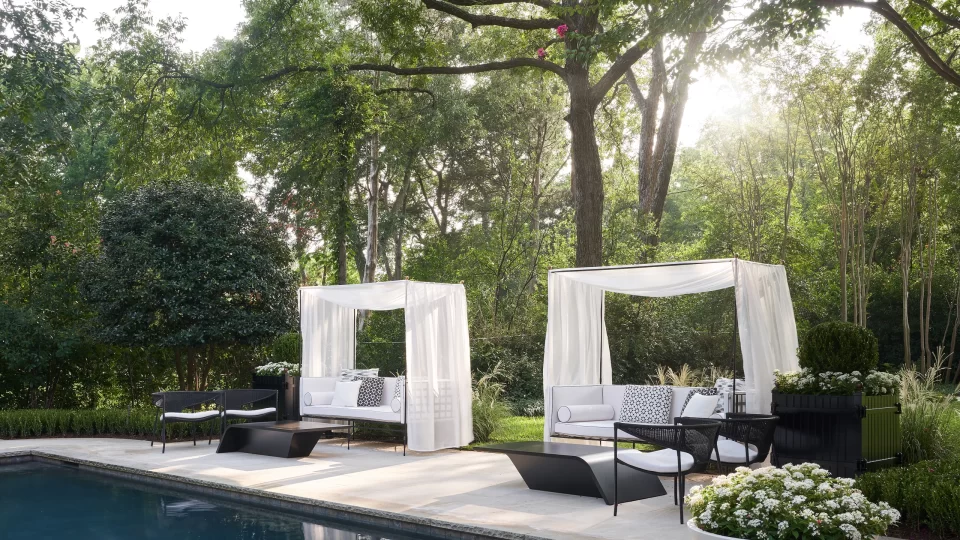When imagining your ideal outdoor living space, visions of lush greenery, colorful bloom-filled gardens, and burbling fountains likely come to mind. But the non-living elements – collectively known as the hardscape – are equally critical in bringing an outdoor area to life. As a landscape designer, it’s my job to craft hardscapes that perfectly complement the natural environment. Keep reading to learn about the pivotal role of hardscaping, elements that make up a thoughtfully designed hardscape, and tips for creating one that takes your breath away.
Defining hardscaping and its importance
The term “hardscaping” refers to all the non-living features integrated into landscape design – pathways, patios, walls, lighting, furnishings, water features, and more. While plants provide softness and vibrancy, hardscaping lends structure, function, and visual interest. It knits the overall space together into a unified whole.
Well-conceived hardscapes seamlessly support the lifestyle envisioned for the space. They create the backdrop for outdoor activities while minimizing maintenance requirements. hardscaping done right adds enormous value by extending your home’s livable area. As a landscape designer, devote just as much attention to hardscaping as the horticultural elements. Thoughtful hardscaping sets the tone for the experience you’ll have in your outdoor rooms. It brings the space to life as your oasis.
Design tips for stunning hardscapes
When designing hardscapes, follow certain principles to ensure functionality, durability, and visual appeal:
- Use quality materials – Select natural stone, pavers, tiles, woods, metals, and composites that withstand the elements in your climate. Don’t cut corners here.
- Combine textures and colors – Contrast rough pathways with smooth patios and muted grays with warm brick reds. This adds depth and dynamism.
- Follow natural lines – Let the shape of the land and existing features guide the layout. Meandering paths feel more organic.
- Leave room around hardscapes – Provide sufficient space between planted beds for artful illumination and maintenance access.
- Mind drainage and erosion – Grade pathways to divert water and prevent erosion. Use porous materials where possible.
- Include cozy niches – Create intimate sitting areas tucked away from the main space for quiet contemplation.
- Transition from indoors to out – They are use patios or decks to seamlessly join exterior and interior spaces.
- Light creatively – Illuminate pathways and accent architectural features for drama. Silhouette plants against light.
- Focus on multi-season interest – Gardens change, but hardscapes provide year-round enjoyment.
- Balance simplicity and ornamentation – Keep the style consistent but vary texture, shape, and décor for interest.
By applying these design principles transform a blank yard into a functional extension of your living space brimming with character. The hardscape sets the framework while the plants provide the finishing flourish.
Executing the design- Hiring landscape contractors
Once we’ve turned dreams into designs, hand off plans to capable landscape contractors for installation. Hardscaping often involves masonry, carpentry, lighting, and heavy equipment requiring specialized skills. Be sure contractors have experience with the types of hardscaping you want and references from recent jobs. Check that they are licensed, bonded, and insured. Also, ask about any warranties or guarantees on their workmanship. Pay close attention to contractor preparation and base installation. Proper grading, subsurface drainage, and foundation compaction prevent future shifting, cracking, or erosion. Don’t allow shortcuts here for quality that lasts decades.

